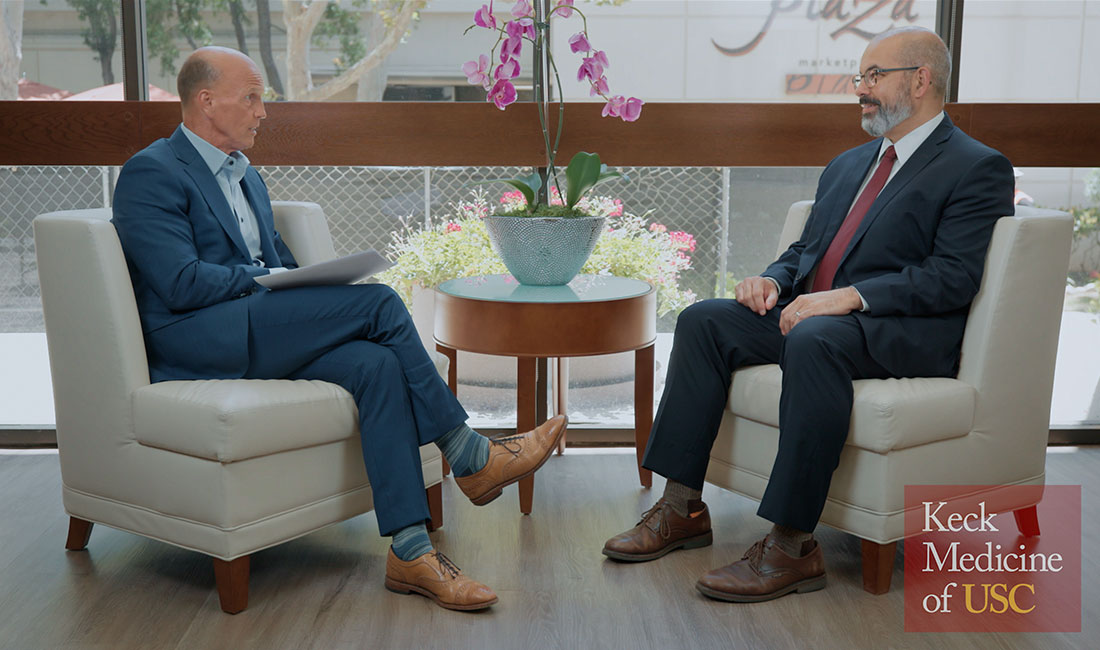
Rod Hanners, CEO of Keck Medicine of USC, talks with an oncologist about Keck Medicine’s participation in the national Cancer Moonshot initiative.
“Conversations with Rod” is a video series featuring Rod Hanners, CEO of Keck Medicine of USC, talking with our doctors about our innovative medical care and research. In this video, Hanners sat down with Jorge Nieva, MD, an oncologist who specializes in lung, head and neck cancers. He treats patients at USC Norris Comprehensive Cancer Center, part of Keck Medicine. Watch the full video below — or read excerpts from their conversation.
Interview Excerpts
You were involved in the national Cancer Moonshot initiative under the Obama administration. Tell us about that.
Jorge Nieva, MD: The Cancer Moonshot, under then Vice President Biden, was a wonderful initiative that really aimed at doubling the rate of cancer research. We put together a team and created a project focused on evaluating human performance. This was a way of understanding who is too tired to get that next round of chemotherapy. And we had some interesting findings. We showed that people who weren’t as active — and you can get this information now from any kind of wearable device — can predict, in an instant, whether someone is more or less likely to have a complication from cancer treatment.
What is it about cancer that makes it so difficult to research and treat?
JN: I think the biggest challenge is the recognition that cancer is not just one disease. So, it’s not enough to say that I’m researching cancer. It’s not enough to say that you’re researching lung cancer. It’s not enough to say that you’re researching EGFR (epidermal growth factor receptor)-associated lung cancer. Because we’re finding that there are subtypes of EGFR-associated lung cancer, and those different subtypes all deserve unique treatment.
For example, I have a patient who came into my office, and her cancer was getting worse. I looked at her molecular profile and determined that, while last week she had to treat her cancer with chemotherapy, this week a new drug had been approved for her particular genetic alteration. So, while she had to get difficult chemotherapy before, now she just had to take a pill.
How close are we to a cure for cancer?
JN: Well, we’re already curing cancer for a lot of our patients. And I used to not be able to say that. It used to be that when I first met a lung cancer patient who had advanced disease, or stage IV, I would tell them that there really wasn’t any chance of curing this, because I’m very honest and direct with people. But the great thing now is, I don’t have to say that to people anymore. Now I can say, “There’s a chance you’re going to have a long-term remission.” We now have lung cancer patients who can go into remission for many years without even using chemotherapy; instead, they just take a pill once a day.
Topics
